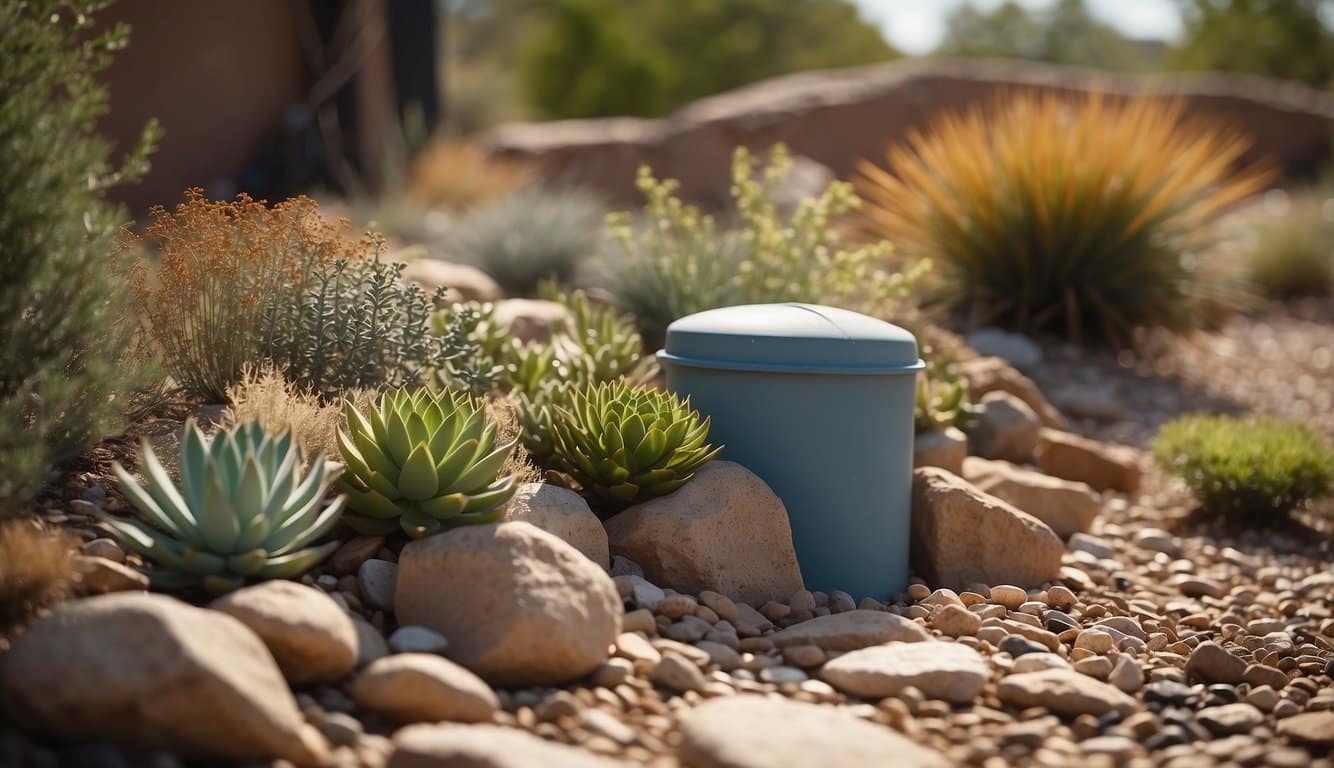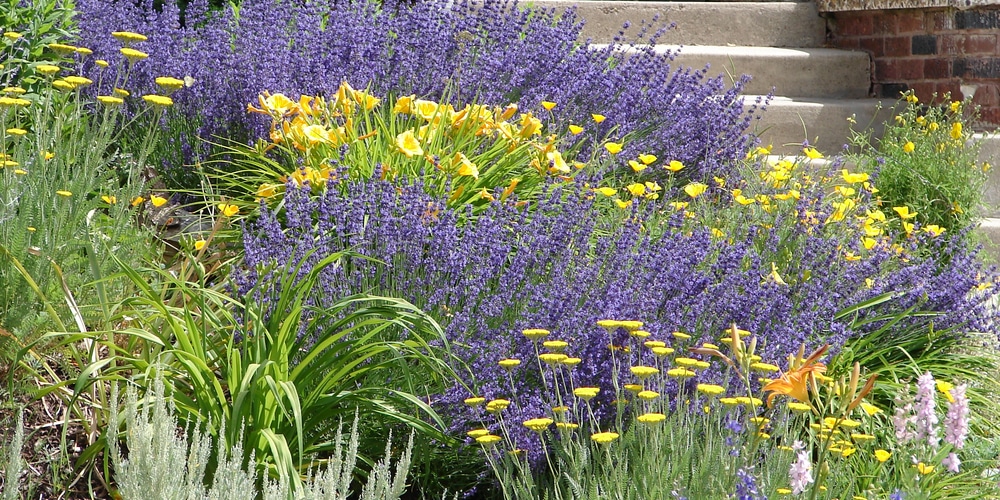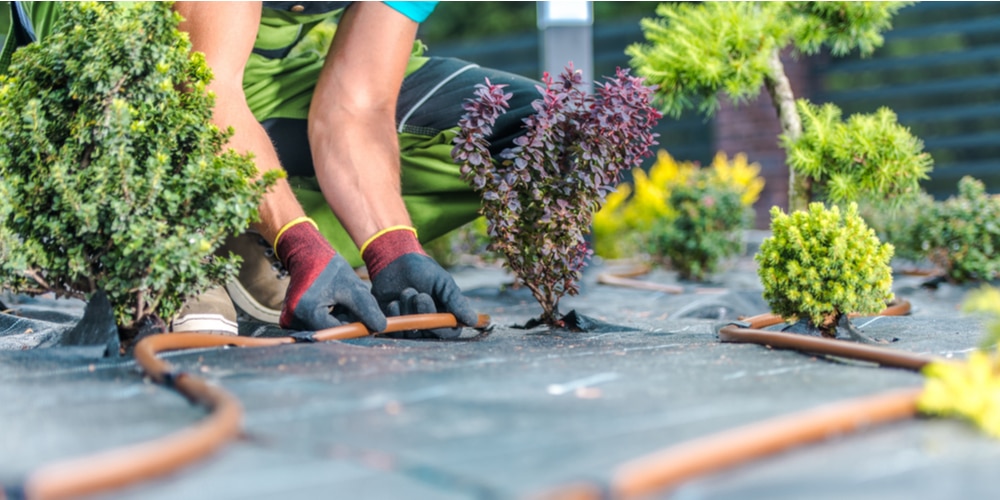Drought-resistant Landscaping

Creating a drought-resistant yard starts with embracing a landscaping paradigm that reduces water use yet maintains a thriving outdoor space.
This approach involves selecting plants, soil amendments, and watering techniques that together create a garden resilient to dry spells, particularly suitable for Illinois’s varying climate.
Key Components:
- Appropriate Plant Selection: Choose native or adapted plants known for their low water needs.These species are acclimated to local conditions and typically require less maintenance.
- Soil Improvement: Incorporating organic matter helps soil retain moisture. Mulching is also crucial as it reduces evaporation rates and weed growth.
- Watering Strategies: Efficient irrigation methods like drip irrigation or soaker hoses concentrate water at plant roots with minimal waste.It’s best to irrigate early in the morning to reduce evaporation losses.
Benefits:
- Water Conservation: By using plants that require less water and employing efficient watering methods, you significantly reduce your garden’s water demand.
- Environmental Impact: A reduction in water usage means less strain on public water supplies and natural ecosystems.
- Maintenance: Drought-resistant landscapes often require less upkeep, saving time and effort.
Selecting Plants for Illinois Climates
In Illinois, finding the right plants for your yard means understanding which species will thrive in the state’s varying weather conditions, particularly during dry spells.
Native Plants
Native plants are the cornerstone of a resilient Illinois garden, due to their adaptability to local climates and minimal water needs after establishment.
Here’s a list of drought-tolerant native plants suitable for Illinois landscaping:
- Trees:
- Hackberry (Celtis occidentalis): A tall tree that can reach heights of 40 to 70 feet and flourishes in zones 2 to 9, notable for its spring flowers.
- Shrubs:
- Purple Beautyberry (Callicarpa dichotoma): A striking shrub growing to about 4 feet tall and known for its vibrant purple fruit in autumn.
- Perennials:
- Purple Coneflower (Echinacea purpurea): With distinctive purple daisy-like flowers lasting through the summer, this plant is a strong performer under full sun to part shade and is forgiving of poor soil.
Drought-resistant Non-native Options

There are non-native plants that can also perform well in Illinois, contributing to the diversity and resilience of your garden.
- Perennials:
- Russian Sage (Perovskia spp.): As a woody perennial, it’s appreciated for its attractive foliage and ability to manage heat and drier conditions.
For both native and non-native selections, ensure that your choices align with your specific garden conditions, such as sunlight, soil type, and exposure to wind and precipitation levels.
By choosing these adapted plants, you’re setting your yard up for success, even in periods of drought.
Soil Preparation and Improvement
Before transforming your yard into a drought-resistant wonder, focusing on soil testing and enhancing its water retention capabilities is essential for long-term success.
Soil Testing
To start, test your yard’s soil to understand its current condition.
Collect soil samples from various locations in your yard and send them to a local extension office or lab for analysis.
The results will provide vital information on your soil’s pH level, nutrient content, and texture.
- pH Level: Ideal pH for most plants is between 6.0 and 7.0.
- Nutrient Content: Key nutrients include Nitrogen (N), Phosphorus (P), and Potassium (K).
- Texture: Determines water retention and drainage capabilities.
Soil Test Results Table:
| Soil Property | Ideal Range | Your Soil’s Condition |
|---|---|---|
| pH Level | 6.0 – 7.0 | |
| Nitrogen (N) | Varied | |
| Phosphorus (P) | Varied | |
| Potassium (K) | Varied | |
| Texture | Balanced |
Once you have your soil’s baseline information, you can amend it accordingly to meet the needs of your preferred drought-resistant plants.
Enhancing Soil Retention
Improving your soil’s ability to retain water is a critical step in creating a drought-resistant yard.
- Organic Matter: Incorporate organic material like compost or well-rotted manure to enhance water retention.
- Mulch: Applying a layer of mulch helps to maintain soil moisture and regulate temperature.
Best Practices for Enhancing Soil Water Retention:
- Add 2-4 inches of organic material to soil.
- Apply 2-3 inches of mulch, avoiding direct contact with plant stems.
These improvements can make a significant difference in the health of your plants and the overall water efficiency of your garden.
Irrigation Techniques
Proper irrigation is crucial in a drought-resistant yard in Illinois. Your goals should aim to minimize water waste while ensuring your plants receive the necessary hydration.
Drip Irrigation Systems
Drip irrigation is a highly efficient watering method that delivers water directly to the roots of your plants, reducing evaporation losses. Here is how you can leverage this system:
- Installation: Set up a network of tubing with emitters positioned close to the plant bases.
- Frequency and Duration:
- Frequency: Adjust the watering frequency according to seasonal demands and plant types.
- Duration: Opt for longer intervals but less frequent watering to encourage deep root growth.
- Maintenance:
- Regularly check for leaks and blockages.
- Clean filters to maintain water flow.
Water Conservation Strategies
Employing water conservation strategies extends beyond the choice of irrigation system. Implement these tactics:
- Mulch Application: Apply a 2 to 3-inch layer of mulch around plants to maintain soil moisture and reduce evaporation.
- Watering Schedule: Water your garden either early in the morning or late in the evening to lessen water lost to evaporation.
- Smart Controllers:
- Use smart irrigation controllers that adjust watering based on soil moisture and weather conditions.
- Select controllers that offer features like cycle and soak to prevent water wastage and runoff.
Yard Maintenance Practices
To ensure your drought-resistant yard remains healthy and vibrant in Illinois, regular maintenance is crucial. These practices are tailored to conserve water while promoting a beautiful landscape.
Mulching
Using mulch in your garden beds is an efficient way to retain soil moisture and suppress weeds.
Apply a 2-3 inch layer of organic mulch such as straw, bark, or wood chips around your plants.
This layer helps to minimize evaporation and keeps the soil cooler during hot spells, requiring less frequent watering.
Pruning
Pruning is essential to maintain the health and aesthetics of your drought-resistant plants.
By removing dead or diseased branches, you improve air circulation and prevent potential plant diseases.
Prune during the dormant season and always use clean, sharp tools to make precise cuts that heal quickly, preventing excessive water loss from the plants.
Weeding
Weeds can be fierce competitors for water and nutrients in your yard.
Regular weeding ensures that your drought-tolerant plants are not fighting for these resources.
Hand-pull weeds or use a hoe, and try to remove them before they set seed to avoid a greater problem down the line.
For a natural herbicide alternative, consider using vinegar or boiling water on weeds, but take care not to harm your desired plants.
Frequently Asked Questions
When creating a drought-resistant yard in Illinois, understanding the right practices and selections will ensure sustainability and beauty. Your concerns are addressed in the following common questions.
What are the best drought-resistant plants for landscaping in Illinois?
Drought-resistant plants suitable for Illinois include Hackberry (Celtis occidentalis) which grows in a vast range of zones, as well as Purple Beautyberry (Callicarpa dichotoma) known for its distinctive purple fruit.
For perennial options, Purple Coneflower (Echinacea purpurea) is both drought-tolerant and a favorite among local wildlife.
What techniques can be used to reduce water consumption in an Illinois garden?
To minimize water usage, opt for native plants that are adapted to local conditions.
Incorporating xeriscaping principles can also help. Group plants with similar water needs and utilize efficient watering methods, such as drip irrigation, to reduce water consumption.
How can mulch and soil amendments improve drought resistance in a yard?
Mulch helps conserve soil moisture and keeps roots cooler, which is vital for drought resistance.
Adding organic matter to soil improves its water retention abilities, ensuring that plants require less frequent watering.
Are there specific irrigation systems recommended for drought-prone areas in Illinois?
Drip irrigation systems are highly recommended for drought-prone areas. They deliver water directly to the plant’s roots, reducing wastage due to evaporation and runoff.
Additionally, soaker hoses can be an effective method for targeted watering.
How does lawn size or type impact water usage in creating a drought-tolerant yard?
The larger the lawn, the more water it typically requires. Opting for drought-resistant grass varieties or reducing lawn size in favor of xeriscaping with native plants and hardscaping can lead to substantial water savings.
What government resources or incentives are available for creating a drought-resistant yard in Illinois?
You can often find resources and incentives through the Illinois Department of Natural Resources or local extension services.
Look for programs that offer rebates for water-wise landscaping or provide guidance on native plant selection and soil conservation techniques.
Last update on 2025-06-06 / Affiliate links / Images from Amazon Product Advertising API



